‘The Sandman’ Creators Talk New Episode and Easter Egg You May Have Missed
The co-creators of The Sandman always intended to break convention by making a secret eleventh episode that would be released as a surprise.
Neil Gaiman, Allan Heinberg, and David S. Goyer recently spoke to Newsweek about the bonus episode, which was released on Friday, August 19 on Netflix and adapts the stories A Dream of a Thousand Cats and Calliope from Gaiman’s original work.
The idea to do the unexpected was one the show’s co-creators had from the outset. “From the very, very, very beginning, like pre-history, from the point where David Goyer and I were introduced to Allan for the very first time, we sat down, had dinner and discussed what we want him to make, and the idea then was 11 episodes,” Gaiman said. “And we had to decide that because on Monday morning we were going to be pitching to the various entities who could buy Sandman what we wanted to make, and what we were pitching was 11 episodes. Ten episodes will be the story, one would be a magical bonus that nobody was expecting.”

Netflix
“We were keen to do this because we felt it really captured the spirit of Sandman,” Goyer said. “First of all, we wanted to surprise audiences — and surprise is something that is rarely accomplished these days. Second, these would have been difficult stories to adapt within the body of the seasons — but it was our dream (pun intended) to still adapt them. So we came up with this notion of doing a secret, 11th episode.”
“We pitched the idea when we were taking Sandman to market — and the only streamer willing to commit to something so unusual was Netflix which, frankly, sealed the deal for us,” Goyer said.
‘The Sandman’ Easter Egg You May Have Missed
A Dream of A Thousand Cats, the first part of the bonus episode, is an animated tale that features an impressive voice cast, and one that fans may or may not realize already has a history with The Sandman franchise.
The episode includes actor James McAvoy who voices a Golden-Haired Man, but the actor also voices Dream in the Audible adaptation of Gaiman’s work. In the show, Dream is played by Tom Sturridge, but the co-creators were keen to have McAvoy play a part in the series as a nod to fans.
“We were so excited,” Gaiman said about surprising fans with McAvoy’s inclusion in the show. “I think that one was Allan’s idea because I vaguely remember Allan calling me when I was in New Zealand, he was saying ‘Will you ask James McAvoy?’ And I said, ‘Yeah, of course. What a great idea’.”
“Yes, and that was a no-brainer just because we all love him, and yeah I couldn’t imagine anybody else doing it,” Heinberg added.
Goyer concurred with his fellow creators, as he said: “In terms of cross-pollination with the Audible adaptation, we just thought ‘Why not?'”
On A Dream of a Thousand Cats
A Dream of a Thousand Cats was directed by Hisko Hulsing, who also spoke to Newsweek about the episode which sees a cat named The Prophet (Sandra Oh) tell other felines how they could rule the world if only they dream it into being.
When reflecting on choosing Hulsing to direct the episode, Goyer said: “We knew we wanted to animate it — and we pitched it as an animated story when we met with all the buyers.
“Once Netflix agreed, it then became a process of trying to find the right team. We considered animated, but honestly, Hisko’s hand-painted approach seemed the most organic and the most beautiful way to honor the original artwork.”
Gaiman joked that they would need a “feature film budget” to make the story in live-action since “really good cat actors out there have fabulous agents and are really expensive,” adding, “we knew that we didn’t want to do weird CGI-people cats, we had Hollywood go out and road test one of those for us and it didn’t work.
“Animation felt like part of Sandman, Sandman comes from comics, it comes from words and pictures. That story came from the amazing Kelley Jones, who had cats then and has cats now, drawing these beautiful cats for us and making that story real. And I just love that we could bring that level of artistry and craft, and we had an amazing director.”
Hulsing said he was “not 100 percent sure why they chose [him] for [his] style” but that he felt his artwork, which used oil paintings on canvas which were combined with 2D and 3D animation is “very painterly and dreamy by itself.”
“There is a very realistic style,” the director told Newsweek. “So it’s grounded in reality but it’s always very trippy and dreaming, so I think they sort of felt like ‘well, he can probably pull it off.'”
The animator, who names Rembrandt and 15th-century Dutch painters as an influence, said of making the episode: “It’s very classical, and that was what I actually tried to do with this… I wanted to almost get this very moody atmosphere, dreamy atmosphere, and then I combined that with 2D animation and rotoscoping.”
Regarding working with the creative team to make the episode Hulsing added: “I had quite some freedom. Allan did review everything we did but he trusted me, in my decisions as director, and he wasn’t very involved as far as I knew.
“I had a bigger budget than usual, and I had animators and a team here… I’ve been working with them for years, and everybody was like, ‘this is so good to paint’ so everybody was enjoying it so much.
“In a way it’s a dream project actually, and that’s so great if you can just go on until you think it’s perfect. I mean there’s not a shot in the film that [I’m not happy with], maybe one that I’m not happy with, but I’m really happy with the way things look.”
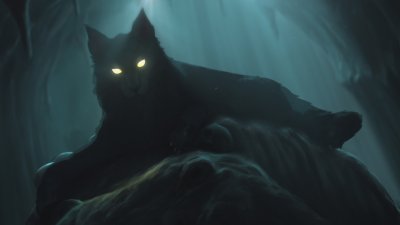
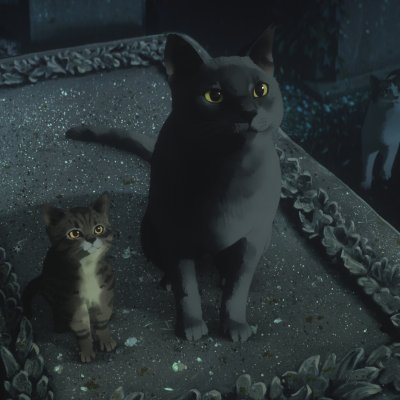
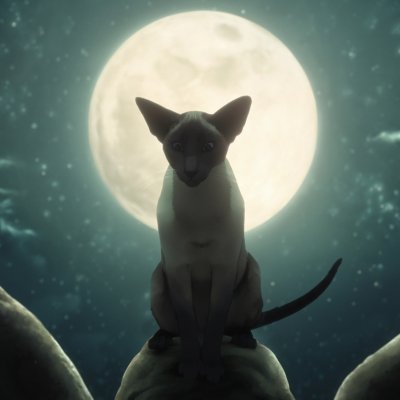
On Calliope and Making it Her Story
The second half of the bonus episode adapts Calliope, a story of the eponymous Greek muse (Melisanthi Mahut) who is held captive by a writer named Richard Madoc (Arthur Darvill) and forced to give him inspiration for his work.
Louise Hooper directed the episode, and she spoke to Newsweek about approaching the original story in a sensitive manner, particularly given the nature of the sexual abuse Calliope is subjected to by Madoc.
“I’m completely hardwired to put women up-front and basically show their strength and show their intelligence so, for me, it was an amazing opportunity to show a really grotesque, difficult story about a woman’s body, and mind, and voice being repressed, and how we need to learn from that,” Hooper said.
“I mean, obviously, there’s complete echoes with #MeToo, so it was a really important piece for me to put my signature on and to collaborate with Allan Heinberg and obviously Neil Gaiman, and all the wonderful people in it.
“The thing for me is I just really always want to show women are strong, intelligent, with dignity and with strength and power, and Melisanthi, she’s such a brilliant, nuanced, fabulous actress, gorgeous to look at and brilliant to work with.
“We worked together to show she never pleads, she never begged, she’s never submissive. I will never do that in anything that I direct, a woman can be in a horrifically grotesque situation and she’s degraded but she will always keep that strength. So, to me, it’s like she’s always the better person, she’s always the stronger moral person, and through that there is redemption.”
It was important for Hooper and the show’s co-creators not to show the full extent of Madoc’s abuse onscreen, particularly the moment he rapes Calliope to force her to give him inspiration.
“We never wanted to show that, that was never in the script. I was very glad, and if it had been in the script I would have questioned it,” Hooper said.
“I just feel like you don’t need to see that and I would find it degrading, and you can imagine it doesn’t serve any purpose to put that on screen.
“I feel like what we did was we used the computer… this was the ambition and the ego that he was trying to feed, this monster that’s always empty and always wants more, by this despicable act upstairs. I thought that was a much more elegant way to do that, and it still has an impact.”
Heinberg agreed that they wanted to approach the story “sensitively,” saying: “I think we agreed very early on that we were not going to show certain things on camera, and we worked very closely with the writer, Catherine Smyth-McMullen.
“We had this writers’ room of people who read the story and responded to it in 2022, and we had very frank discussions about representation and how do we make this fully Calliope’s story? So that it’s, as much as we can, without giving away too many surprises how do we tell it from Calliope’s point of view?
“I think everybody went in with that intention and that carried on through when we met Louise Hooper and when we met Melisanthe, everybody was a collaborator in that aspect of it, especially the sensitivity toward her story and the violence that happens to her, and how best to make this her story.”
“I remember long conversations with me in New Zealand and Allan often driving around LA, just phoning me up and we would just talk about the end, and we talk about who Calliope was and how to give her agency in the story,” Gaiman added. “And, you know, at one point we went big and then we pulled back, and figuring out how to do it took a lot.”
Fans of The Sandman comics will know that both stories in the bonus episode feature in the original’s third volume, Dream Country, which includes two other short stories: Façade and A Midsummer Night’s Dream.
When asked if the team has any intention of adapting those, Goyer said: “We hope to adapt both of those stories — and others, like Ramadan, as well.
“As to whether they might be done within the body of the season or as stand-alones, time will tell. Our desire, though, is to continue breaking convention.”
The Sandman is out on Netflix now.

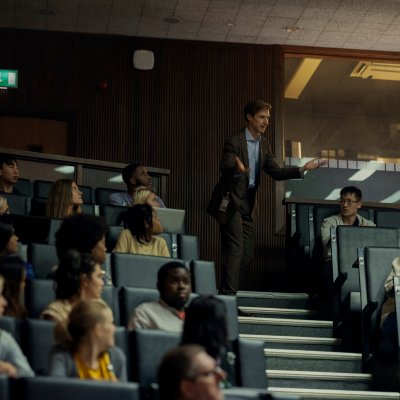
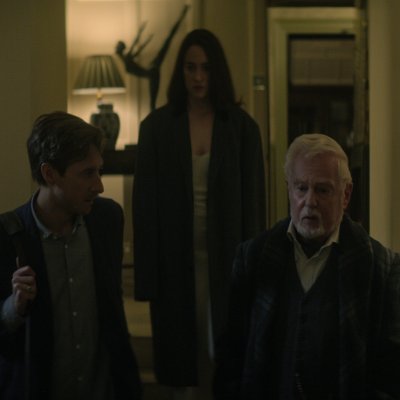

Comments are closed.